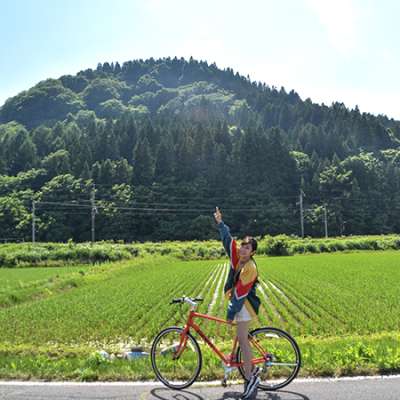Use the
Planning a Trip to Japan?
Share your travel photos with us by hashtagging your images with #visitjapanjp
HOME > Tohoku Colors > Scenery Savorer
Tohoku’s Many Wonders
With lakes and islands, pine tree forests, and towering mountain ranges, Tohoku’s scenic beauty is rivaled only by its rich, centuries-old history and culture. Add to that the bounty of its landscape—deliciously fresh produce, renowned sake, and other culinary delights—and you have a dream trip in a lesser-known part of the country. On a recent visit, AFAR contributor Yukari Sakamoto explored what makes it so special.
Written by Yukari Sakamoto for AFAR
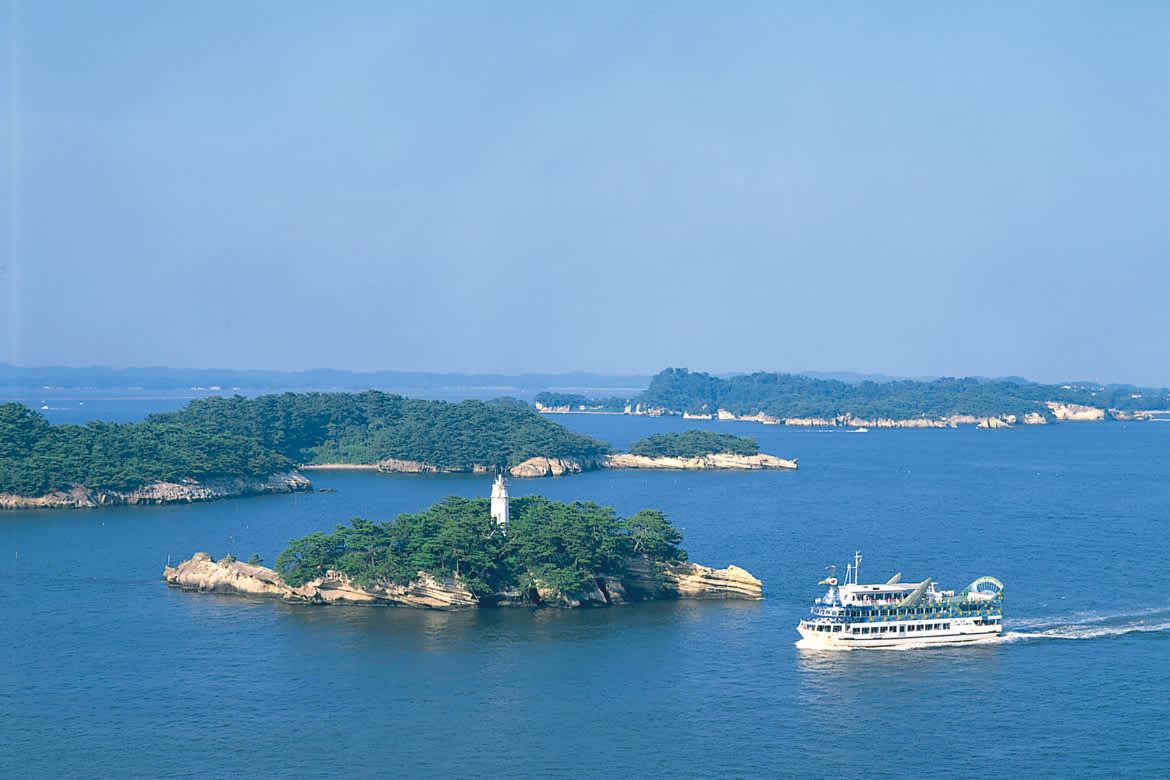
Miyagi’s Coastal and Historic Sites
With its 260 islands covered with pine trees, no wonder Matsushima has been one of the country’s top scenic spots for four hundred years. These islands just north of Sendai in Miyagi inspired poets, samurai, and artists like Tawaraya Sōtatsu, whose pair of folding screens captures the energy of the ocean crashing against the stoic islands. Travelers can participate in this creative legacy on a night cruise that happens once yearly during the harvest moon where passengers enjoy sake and write haiku poems.
Cruises also run year-round delivering gorgeous views every season—even winter brings snow-covered pine trees. One island has just a single tree, while two large islands are home to hundreds of people. In calm waters closer to land, aquaculture farms produce oysters and sea vegetables such as wakame and nori. And near the port are two historic spots worth exploring, Zuiganji and Entsuin.
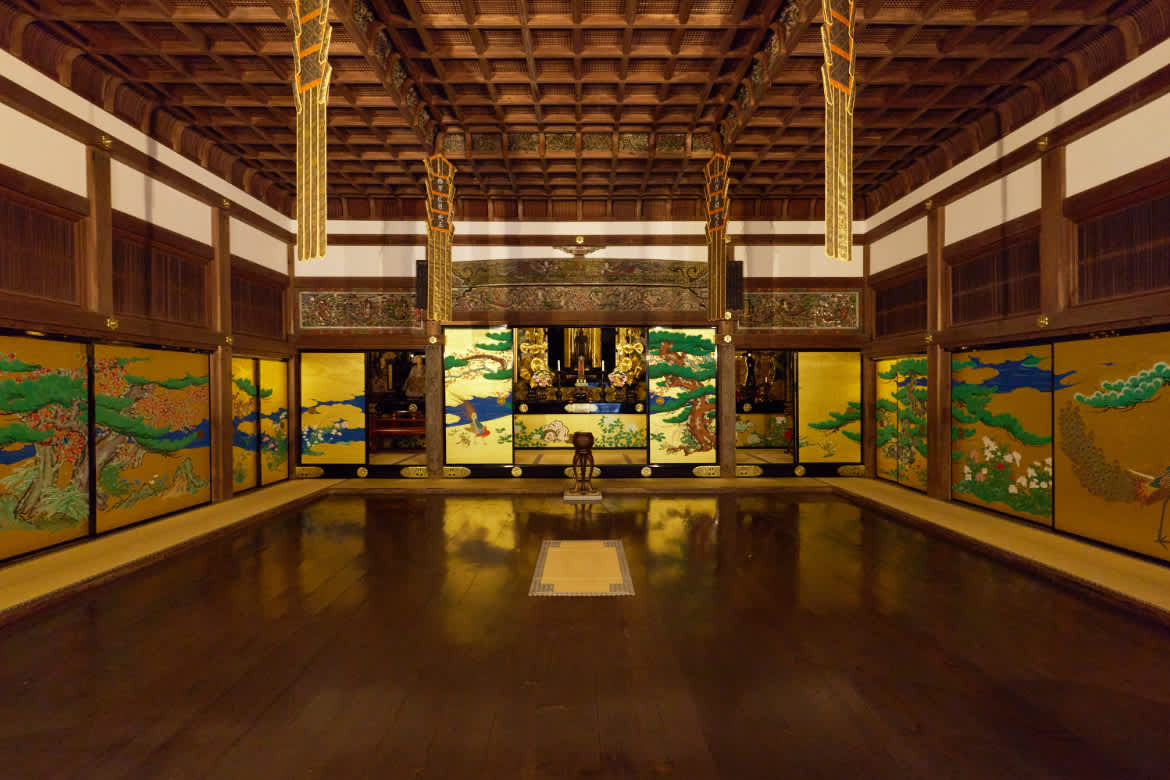
The history of Zuiganji Buddhist temple, a National Treasure and Important Cultural Property, dates to 828 when it was founded by a Buddhist priest, Ennin. Rebuilt by samurai Date Masamune in 1609 as his family temple, the current temple features sliding doors with vibrantly painted gold and colorful pine trees, peacocks, hawks, and other animals —particularly appealing examples of its beauty.
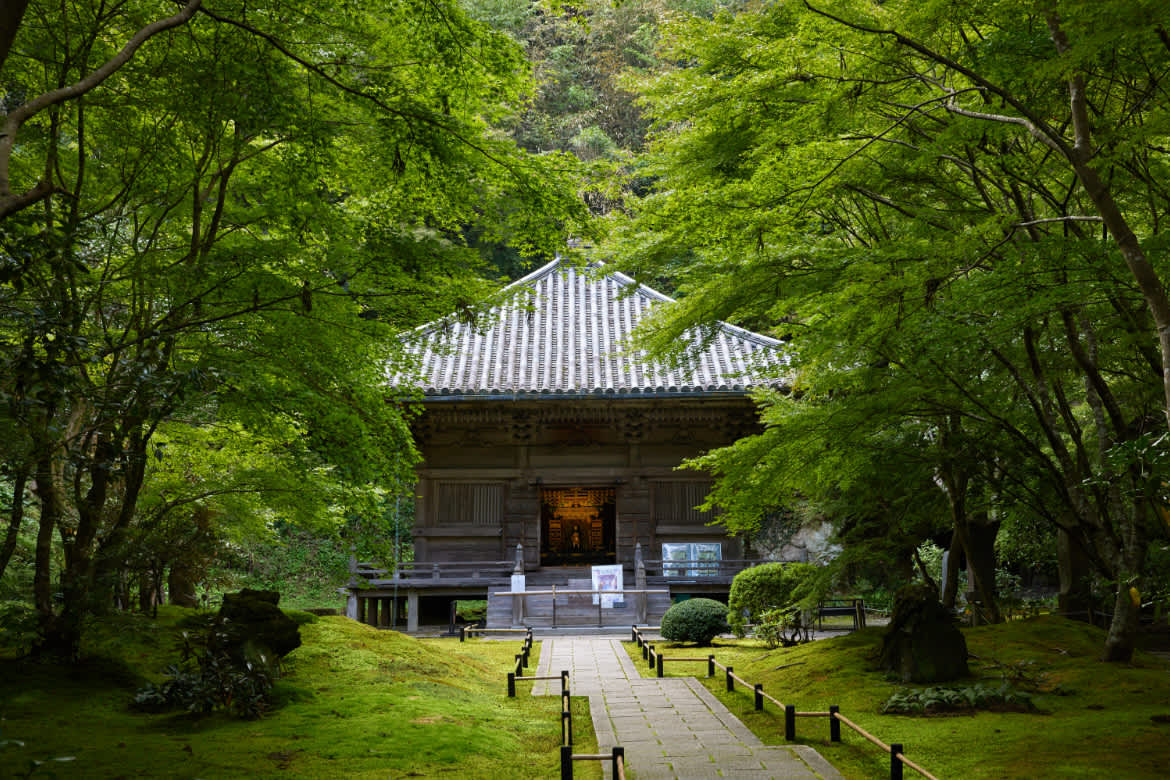
Entsuin Temple is home to the mausoleum of Masamune’s grandson Mitsumune, who died at nineteen. The shrine’s western motifs, unique at the time in Japan, include daffodils, hearts, and spades, the result of a 1613 diplomatic envoy that Masamune sent to Europe. The grounds include a rose garden, a moss garden, and a rock garden made in Mitsumune’s image.
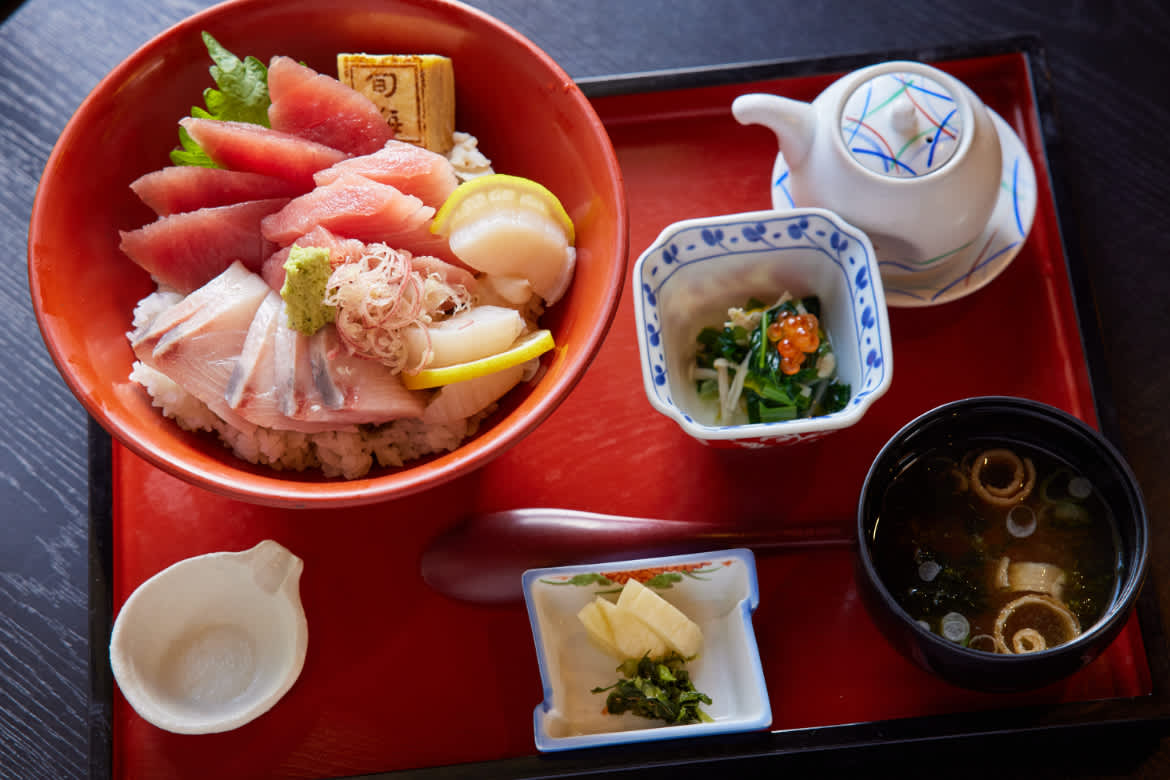
On a quiet back street, Restaurant Shunkai offers seafood dishes like sashimi donburi rice bowls, fried oysters, and an appealing shortlist of local sake.
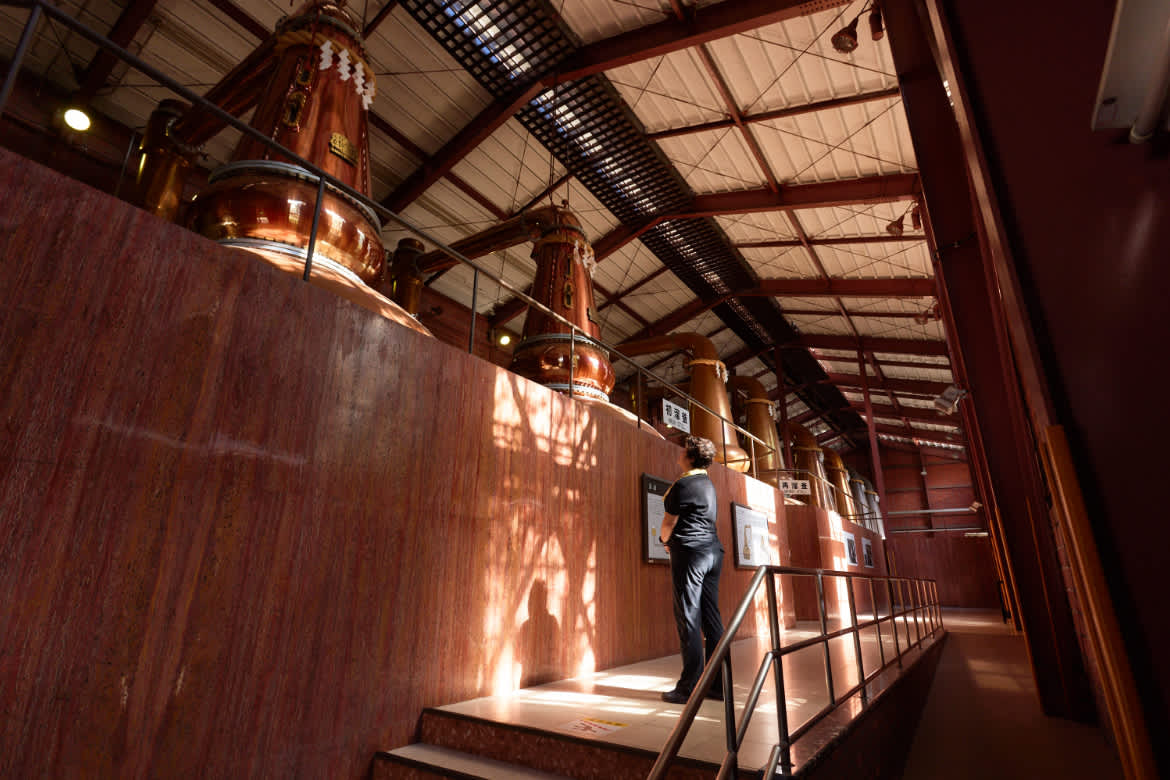
Another way to delight your palate in Miyagi is at Nikka Whisky Miyagikyo Distillery, one of the top producers of Japanese whiskey. A visit gives insight into the hard work of its founder and the father of Japanese whiskey, Masataka Taketsuru, who in 1918 was the first in Japan to study whiskey-making in Scotland. The distillery near Sendai includes about two dozen buildings. Their dark red hue contrasts with the lush green background of the Sakunami mountain forest, giving it the feel of a quiet college campus. Nature was important to Taketsuru, so he had all the power lines buried underground, adding to the tranquility. The copper stills are wrapped at the top with a shimenawa, braided rice straw, and shide, white paper streamers, in a Shinto purification ritual.
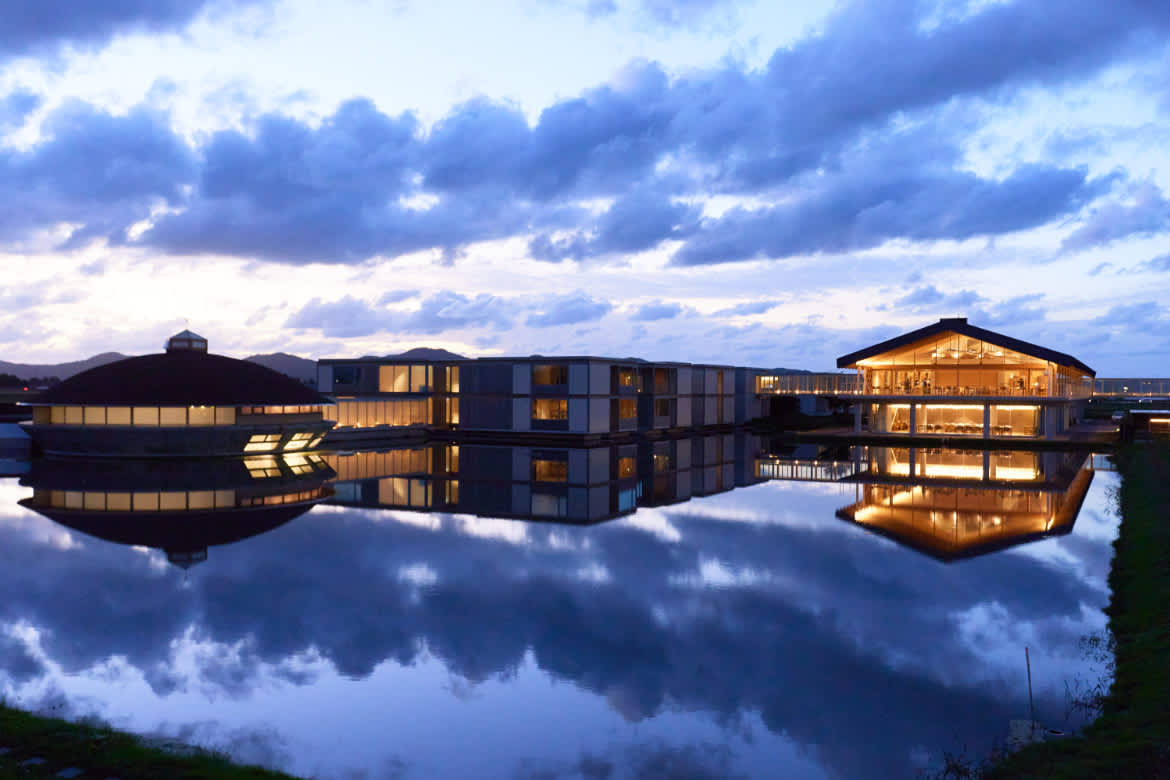
SUIDEN TERRASSE
The first hotel designed by architect Shigeru Ban, SUIDEN TERRASSE is bliss for fans of architecture, books, and nature. Suiden means rice field, and either water or rice paddies surround the hotel, depending on the time of year. Natural light bathes the lobby, curated gift shop, library, and restaurant through floor-to-ceiling windows. This peaceful property opened in Tsuruoka, Yamagata (the only UNESCO-designated “City of Gastronomy” in all of Japan), in 2018, and has two sake bars, a fitness gym, and smaller libraries available only to hotel guests. The collections feature books about travel, design, architecture, food, and traditional crafts.
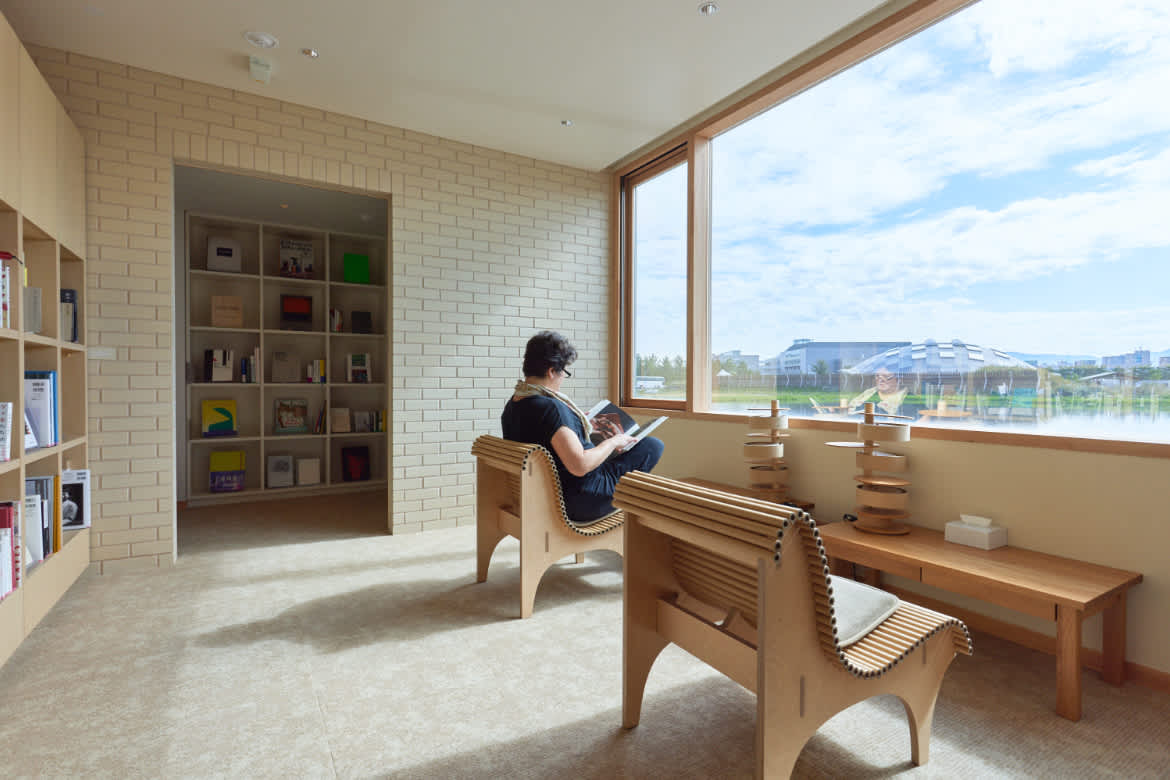
Throughout, you can spot Ban’s signature paper tubes. The concept dates to 1986 when he constructed his first buildings out of paper and cardboard tubes called shikan, used in Japan for temporary structures following natural disasters. These sturdy tubes show up everywhere in the hotel, from guest rooms to libraries. And there’s plenty to observe in the natural surroundings too.
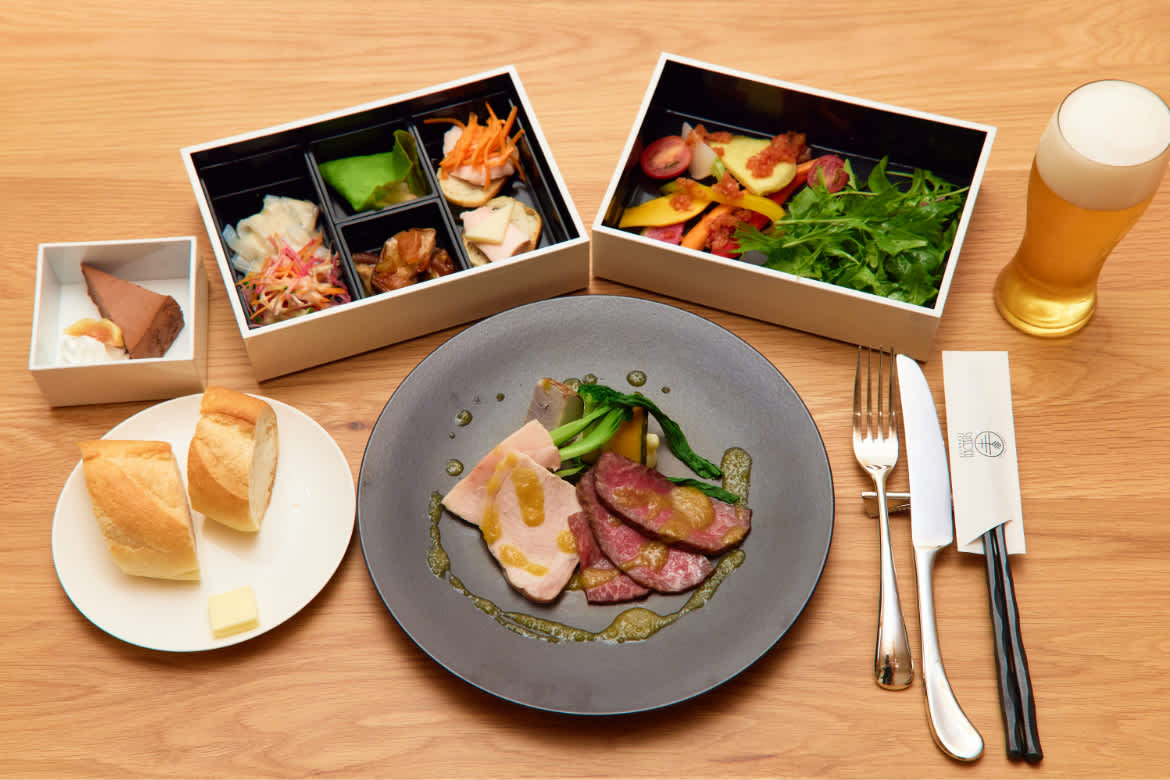
A heron quietly wades through the water in the rice paddy, looking for breakfast while guests tuck into a lacquer bento box packed with colorful small bites. Birds sing their morning song with a majestic mountain in the distance. Reflecting the heavens above, the muddy water of the rice field turns sky blue. Stargazing while enjoying the rotenburo open-air hot springs is a warm, relaxing way to end the day .
The company behind SUIDEN TERRASSE, Yamagata Design, focuses on rural regeneration and its organic farms provide the hotel’s produce. The organization also started SEADS, an agricultural business school among other businesses that support the local community.
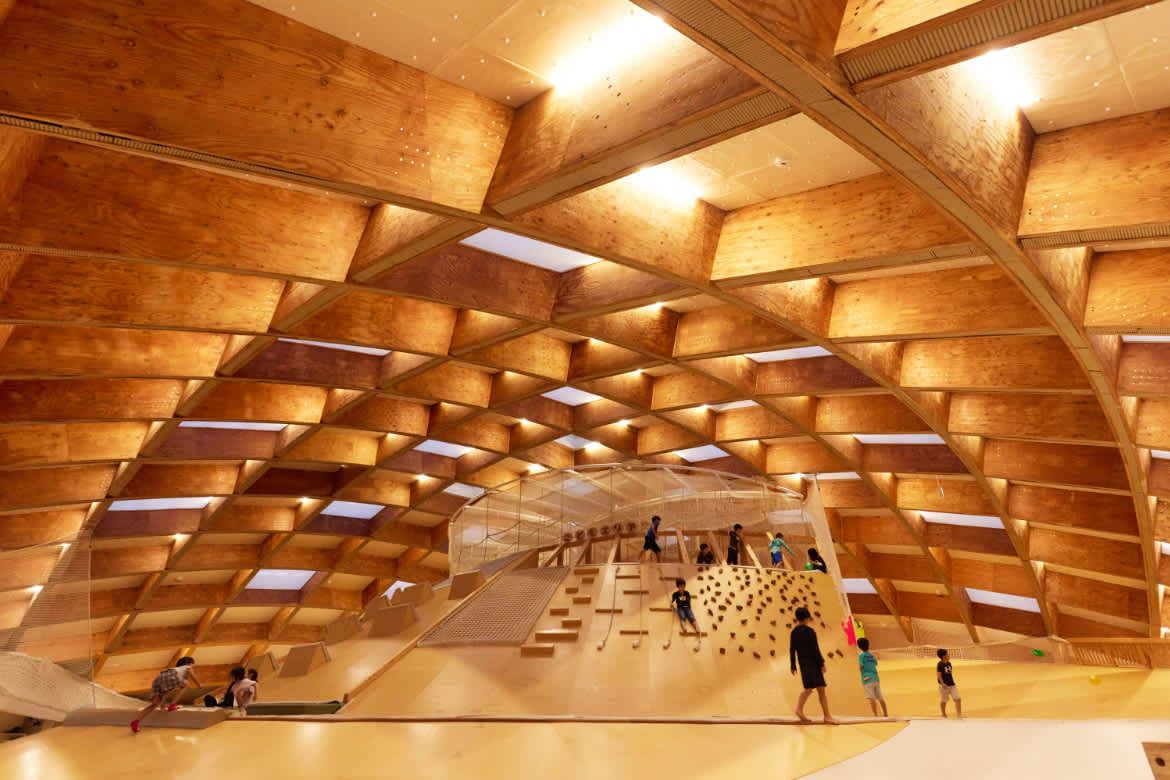
Next to the hotel, KIDS DOME SORAI is a children’s educational facility also designed by Ban and open to the children and adults. The vast open space inside includes climbing walls, a ropes playground, "Asobiba" with reading nooks, and a large area, "Tsukuruba," for arts and crafts.
Yamadera Temple
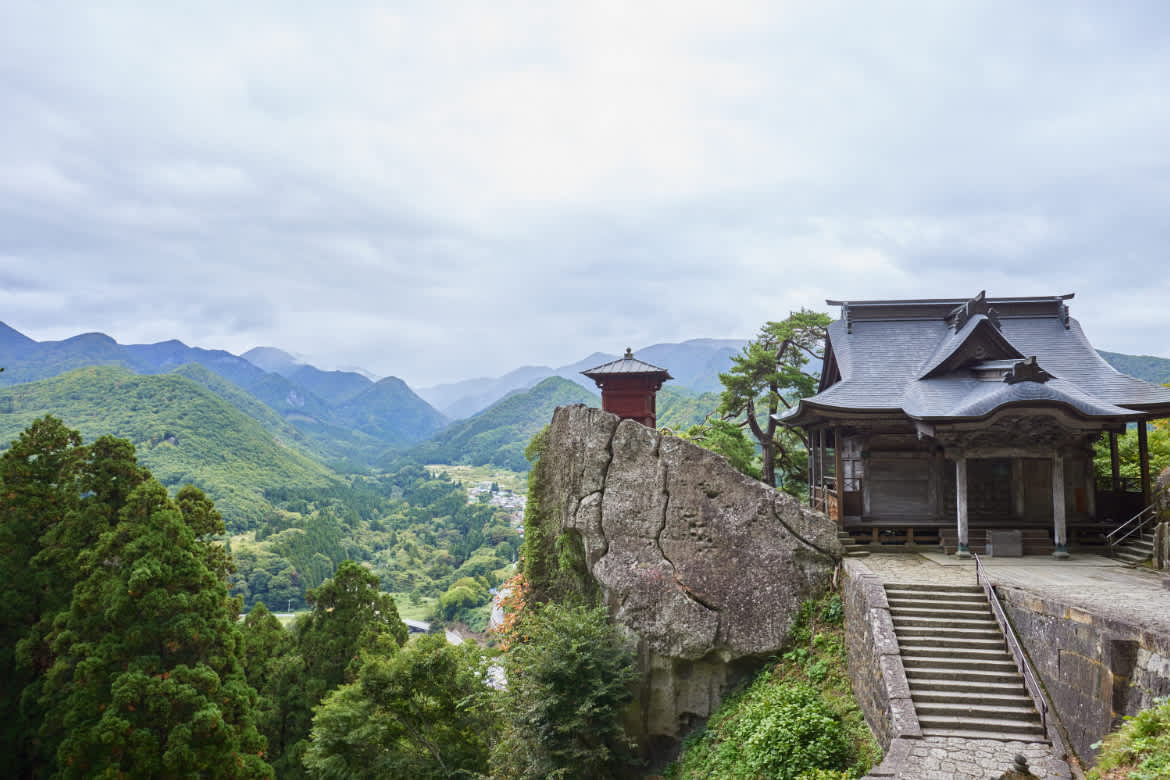
At the mountain’s base lies Konpon Chūdō temple. Designated an Important Cultural Asset, it was last rebuilt in 1356 and is Japan’s oldest temple building. Inside burns the Eternal Light of Buddhism, a flame Ennin brought from Enryaku-ji on Mount Hiei in Shiga that’s said to have burned continuously since 860.
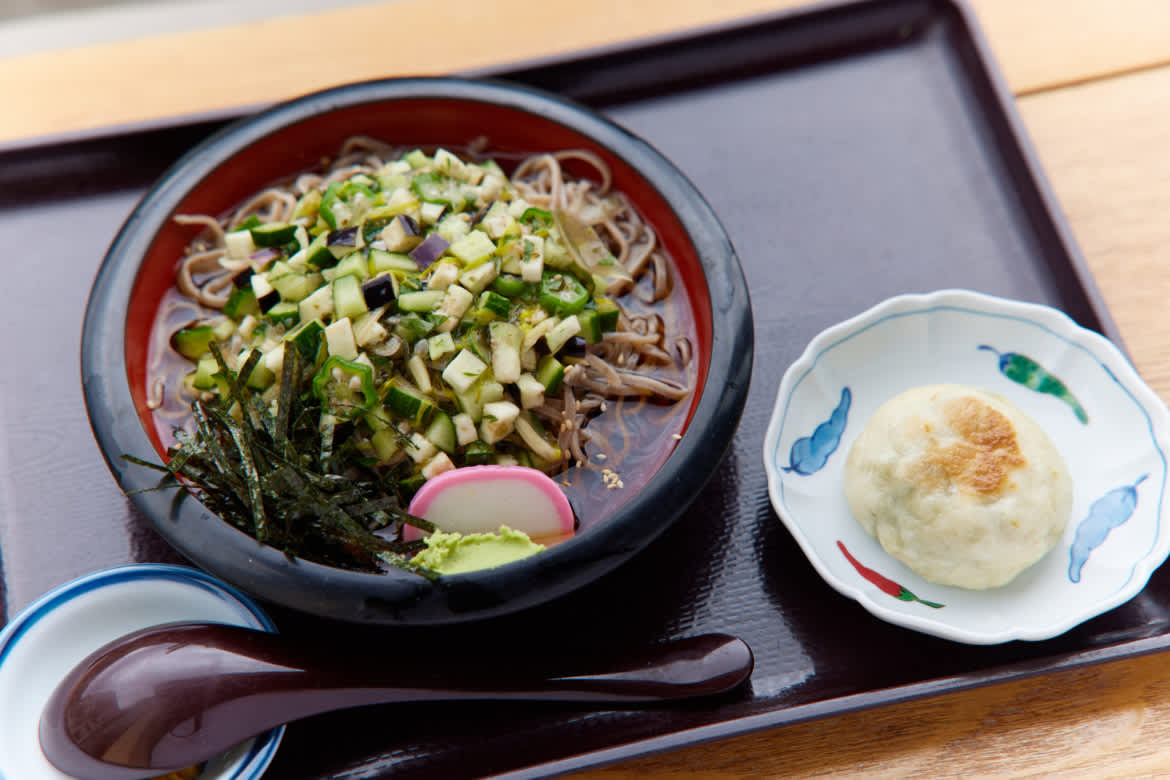
Buckwheat noodle shops in the area offer nourishment to hikers. Mitoya serves a distinctive dish called dashi soba. Dashi, a local traditional dish of minced vegetables, includes cucumber, okra, eggplant, cucumbers, and nori.
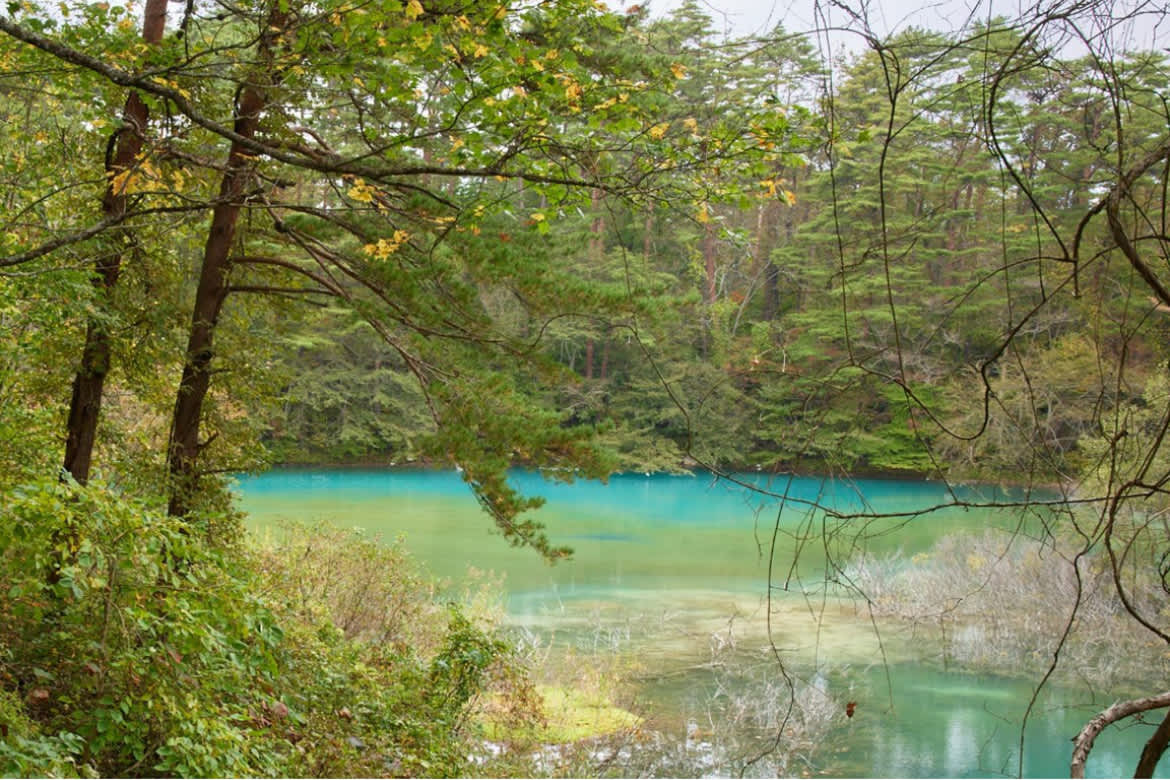
The Colorful Ponds of Fukushima
The Bandai Asahi National Park spans three prefectures: Niigata, Yamagata, and Fukushima. Located within the park are the Urabandai Lake District and a protected area of about eight ponds called Goshikinuma, or “five colored ponds.” A well-groomed, mostly flat hiking path is about two miles (3.6 km) long, approximately a 1.5-hour walk. Depending on weather, the ponds range from vibrant shades of turquoise, cobalt, and sky blue to hues of emerald and forest green. While seemingly magical, as if from a children’s storybook, the colors come from particles of aluminum and silicic acid reflecting the sun’s rays. The hiking path is open year-round, and winter offers a stunning opportunity to see these electrifying hues against snow.
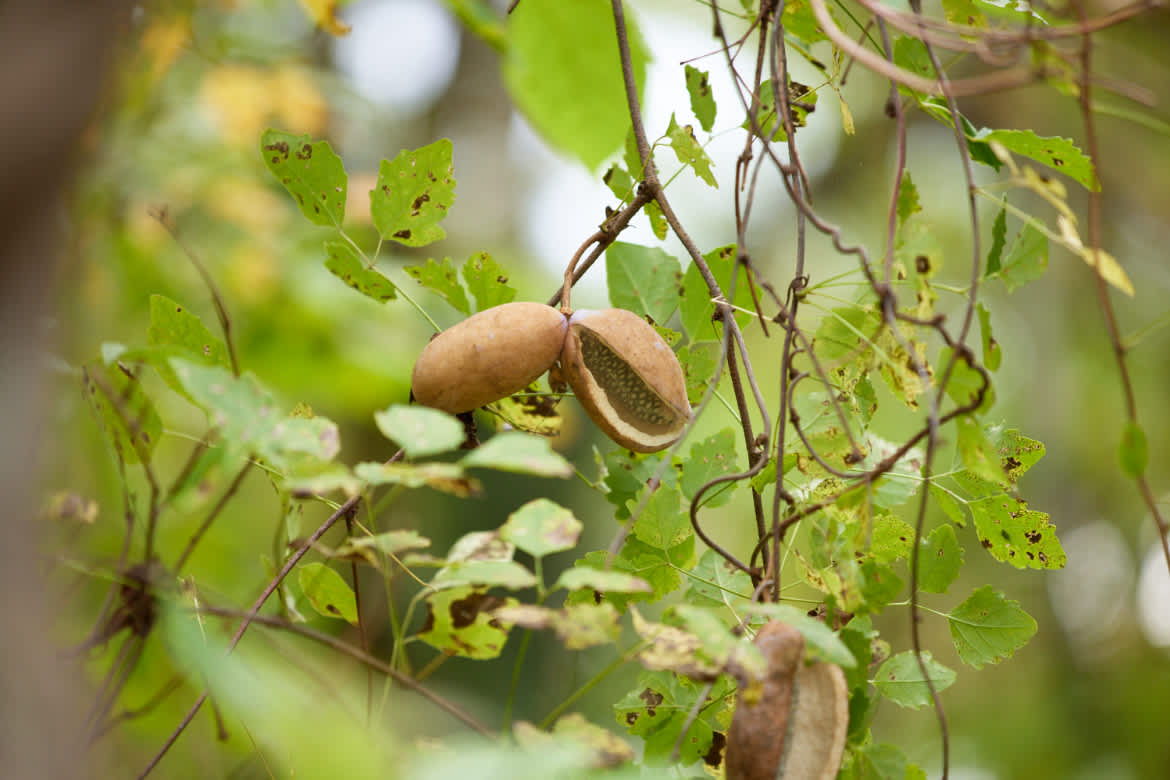
Going with an eco-guide brings the forest flora and ponds to life with details like the katsura tree, whose leaves emit a delightful caramel-corn perfume. You’ll also discover sansai, wild mountain vegetables that are an integral part of the Japanese cuisine, and other plants and flowers on the walk.
On July 15, 1888, a volcanic explosion on Mount Kobandai left lava debris that dammed rivers, creating hundreds of lakes and ponds. In the 1910s, Genmu Endō from nearby Aizu Wakamatsu planted more than 100,000 trees, mostly Japanese red pines, on about 2,000 acres (800+ hectares), helping to restore the area’s forest.
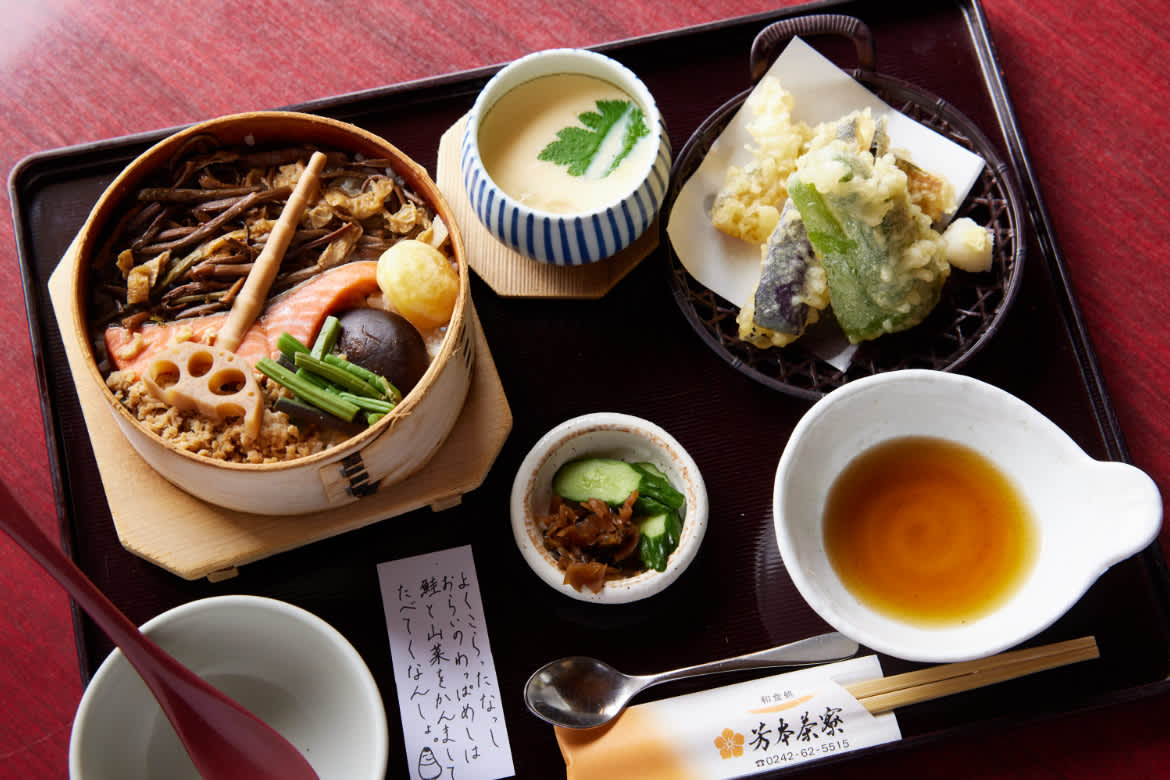
Local specialties include Aizu yamajio salt, junsai, a slippery green pond plant, and sansai—excellent as tempura and often served with soba buckwheat noodles.
Spot Details
-
Matsushima Shima-Meguri (Cruise)(MAP①)
Chonai, Matsushima-machi, Miyagi-gun, Miyagi Prefecture 981-0213
For more information
-
Shunkai (Restaurant)(MAP②)
51-2 Chonai, Matsushima-machi, Miyagi-gun, Miyagi Prefecture 981-0213
For more information
-
Entsuin Temple(MAP③)
67 Chonai, Matsushima-machi, Miyagi-gun, Miyagi Prefecture 981-0213
For more information
-
Zuiganji Temple (National Treasure) (MAP④)
91 Chonai, Matsushima-machi, Miyagi-gun, Miyagi Prefecture 981-0213
For more information
-
Sumiyaki Gyutan Higashiyama Sendai Honten (Restaurant)(MAP⑤)
2-6-30 Chuo, Aoba-ku, Sendai, Miyagi Prefecture 980-0021
For more information
-
The Westin Sendai(MAP⑥)
1-9-1 Ichibancho, Aoba-ku, Sendai, Miyagi Prefecture 980-0811
For more information
-
NIKKA WHISKY MIYAGIKYO DISTILLERY (MAP⑦)
1 Nikka, Aoba-ku, Sendai, Miyagi Prefecture 989-3433
For more information
-
Mitoya (Restaurant) (MAP⑧)
4494-5 Yamadera, Yamagata City, Yamagata Prefecture 999-3301
For more information
-
Yamadera Temple (YAMADERA Tourism Association) (MAP⑨)
4495-15 Yamadera, Yamagata City, Yamagata Prefecture 999-3301
For more information
-
SHONAI HOTEL SUIDEN TERRASSE (MAP⑩)
23-1 Shimotori-no-su, Kita-Kyoden, Tsuruoka, Yamagata Prefecture 997-0053
For more information
-
KIDS DOME SORAI (MAP⑪)
6-1 Tori-no-su, Kita-Kyoden, Tsuruoka, Yamagata Prefecture 997-0053
For more information
-
Al-ché-cciano (Restaurant) (MAP⑫)
83 Shimoyamazoe-ichirizuka, Tsuruoka, Yamagata Prefecture 997-0341
For more information
-
Mt. Gassan (Haguro Tourist Association)(MAP⑬)
72 Inju-minami, Toge, Haguro-machi, Tsuruoka, Yamagata Prefecture 997-0211
For more information
-

-
Goshikinuma Ponds (Ecoguide Urabandai) (MAP⑮)
1095-46 Hibara Soharayama, Kitashiobara-mura, Yama-gun, Fukushima Prefecture 969-2701
For more information
-
Yoshimoto Saryo (Restaurant) (MAP⑯)
139-1 Shirominami, Inawashiro-machi, Fukushima Prefecture 969-3123
For more information
-
INAWASHIRO HERB GARDEN (Restaurant) (MAP⑰)
Listel Park, Kawageta, Inawashiro-machi, Yama-gun, Fukushima Prefecture 969-2696
For more information
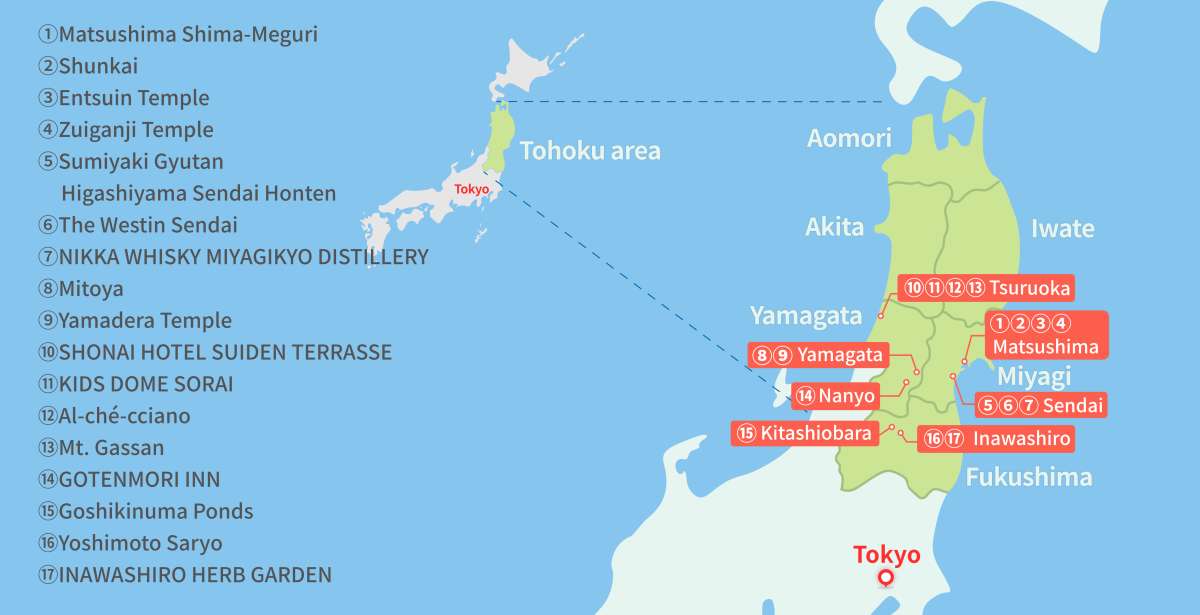
About AFAR

AFAR inspires, guides, and empowers travelers to have enriching experiences
that make a positive impact on the world.
Through critically acclaimed content and innovative marketing programs,
AFAR reaches more than three million travelers each month across print,
digital, social media, email, events, and trips.
















































































